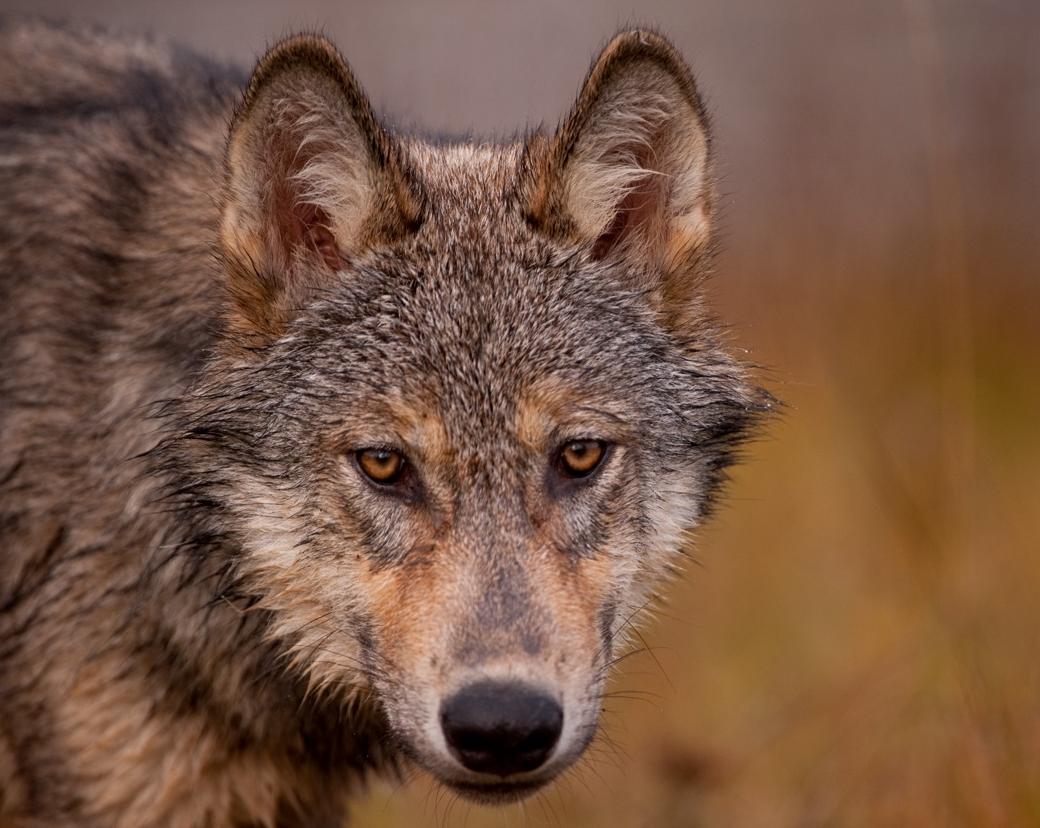Photo credit: Ian McAllister, Pacific Wild
In the slim light of dawn, preoccupied with brewing coffee, I glance out the window of my cabin and see three dark shapes moving in single file over the open hills. The herd of elk I watched the previous evening are nowhere to be found. Coyotes perhaps? No, wolves.
This is the first time I've ever seen wolves outside a national park. Now here they are, loping across private land--my land--where a decade ago there were none. I want to tell someone: There are wolves outside.
That is such a sparse sentence, yet here in Montana, it is loaded with meaning.
Some people around these parts hate wolves, though only a few have had first-hand experience with them. Folks say wolves kill elk (true) and eat lambs (sometimes true). But so do mountain lions and bears--and they are far more dangerous to humans.
The vitriol associated with this carnivore in the West makes me wonder whether the story of "Little Red Riding Hood" is so ingrained in our collective unconscious that we can't get past the image of the Big Bad Wolf. How else do you explain the visceral hatred for this hundred-pound cousin of man's best friend?
Personally, I have always had an inordinate fondness for wolves. When I was in college in the late '80s, camping with buddies in Yellowstone, I listened at night to the excited yip of coyotes, wishing the sounds would morph into the mournful howl of wolves. They never did.
In the '90s, the federal government began reintroducing wolves into Idaho, Montana and Wyoming, initially around national parks. In return the government declared the populations a "nonessential experiment": Under these modified rules of the Endangered Species Act, wolves that killed livestock (or pets) could be shot. Once the population became self-sustaining, management of wolves would be turned over to the states to steward as a game species--protected at times, hunted at times--but with the assurance that wolves would forever endure in the West.
The deal worked better than anyone imagined. Today there are more than 1,700 wolves in these three states.
Some credible conservation scientists here think wolves are ready to come off the Endangered Species list. So long as habitat and prey are secure, and poisoning and bounty hunting are outlawed, these experts believe wolves will survive.
That should be cause for celebration, yet animosity toward the species and a lack of trust between pro- and anti-wolf sides preclude much cork popping. Consider the bumper stickers on pickup trucks: "Save a buck, shoot a wolf." Consider that the Idaho legislature passed a resolution urging the governor to declare a state of emergency--a condition usually reserved for floods and fires--because of wolves. Consider in February, Montana's governor, unhappy with the current stalemate with federal authorities publicly urged residents to take matters into their own hands and shoot errant wolves. And just this month, the US Senate's Continuing Resolution to fund the federal government, has a call for returning the management of wolves to the states, in Montana and Idaho. It's almost unbelievable really, a $1 trillion spending bill for the most powerful and globalized nation on earth, that deigns within its pages, to deal with wolves in the west.
But consider, too, the role of environmentalists and our apparent lack of empathy with the local people who have the most to lose, and nothing certain to gain.
It's clear to me that in the end, there really is no other way forward but to entrust the fate of wolves to those who live nearest to them. I say that, knowing--hating--that some, up to half of the wolves in Montana, will be shot. But holding out stubbornly, indefinitely, against local will seems wrong and may be pointless.
Our job as conservationists is to buy the wolves some time; to give them a chance to howl again and to be an integral part of the West, important to its ecology and its growing ecotourism economy. We must cajole and persuade local communities to be a little more tolerant than our history and culture dictate.
As I watch, my wolves glide into the trees and are gone. In the distance a dog barks; a neighbor is walking the road. I think I should head out and ask whether he saw the wolves, too. But I linger, sipping my coffee. I am not ready to go out there just yet, to put my beliefs into action. You see, I'm not sure I trust him.
